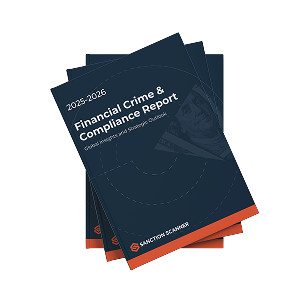Customer Due Diligence (CDD) is a process of verifying the identity of customers and assessing the potential risks of money laundering and terrorist financing. CDD is an important part of any Anti-Money Laundering (AML) and Countering the Financing of Terrorism (CFT) framework. There are four levels of CDD: Standard, Simplified, Enhanced, and Ongoing. The purpose of CDD is to collect relevant information on a customer profile and assess potential risks. A risk rating is given to the customer based on this information, and appropriate controls are decided proportionally to the level of risk.
Customer due diligence is important because it helps organizations identify and manage risks associated with their customers. Here are some reasons why CDD is important:
- Compliance: Many countries and industries have legal and regulatory requirements that mandate organizations to conduct CDD as part of their AML and CTF efforts. Failing to comply with these requirements can result in penalties and reputational damage.
- Risk management: By conducting CDD, organizations can identify and assess the risks associated with their customers, such as the risk of fraud, money laundering, or financing terrorism. This enables them to implement appropriate measures to mitigate those risks and protect their business.
- Reputation: Customers expect organizations to operate with integrity and transparency. Failing to conduct CDD can result in negative publicity and damage to the organization's reputation, particularly if it is associated with criminal activities or unethical behavior.
- Business growth: CDD can help organizations to make informed decisions about whether to engage with a particular customer or not. By identifying potential risks early on, organizations can avoid costly mistakes and focus on building relationships with customers who are less likely to pose a risk.
How to Conduct an Effective CDD Process?
- Establish a customer due diligence policy: Develop a policy that outlines your organization's due diligence process, including the types of information you need to collect and how you will verify that information.
- Identify the customer: Obtain accurate information about the customer's identity, such as their name, date of birth, address, and identification numbers.
- Assess the customer's risk profile: Evaluate the level of risk associated with the customer based on factors such as their business activities, geographic location, and reputation.
- Verify the customer's identity: Use reliable and independent sources to confirm the customer's identity and ensure that they are who they claim to be.
- Understand the customer's business: Obtain information about the customer's business, including their products and services, customer base, and suppliers.
- Screen the customer: Use screening tools to check if the customer is on any watchlists or has any links to criminal activity or terrorism.
- Monitor the customer's activity: Regularly review the customer's account activity to identify any unusual or suspicious transactions.
- Document your due diligence process: Keep a record of the information you collect, the sources you use, and the decisions you make based on your due diligence process.
- Train your staff: Ensure that your staff members understand your due diligence policy and are trained to implement it effectively.
Basic Components of CDD
Name Screening
Name screening is an essential part of conducting operative due diligence. The primary purpose of name screening is to identify customers who may pose a high risk of money laundering or terrorist financing. By screening customers' names against various databases, financial institutions can assess their potential risk level and take appropriate measures to mitigate any risks.
There are several high-risk profiles that financial institutions need to look for during the name screening process. These include Politically Exposed Persons (PEPs), criminals, terrorists, sanctioned individuals or entities, and those who have been reported in the media for illicit activities. PEPs, for example, are individuals who are or have been entrusted with prominent public functions and can potentially use their influence to facilitate money laundering or other financial crimes. Similarly, terrorists and criminals may try to use financial institutions to launder their proceeds or finance their operations.
It is crucial to screen customer names for potential risks as it helps financial institutions fulfill their legal and regulatory obligations and protect themselves from reputational and financial losses. By identifying high-risk customers early on, financial institutions can implement appropriate controls and conduct enhanced due diligence to further assess the risks. This can include monitoring the customer's transactions more closely, gathering additional information about their source of funds and wealth, and conducting periodic reviews to ensure the customer's risk profile has not changed.
Risk Rating
Risk rating involves assessing the level of risk associated with a particular customer or business based on the information collected during the CDD process. The process involves assigning a risk score or rating to each customer based on various factors such as the customer's country of origin, type of business, and the purpose of the account. The risk rating process enables organizations to identify high-risk customers and tailor their monitoring efforts accordingly.
High-risk customers may include PEPs, individuals or businesses from high-risk jurisdictions, and customers engaged in high-risk activities such as money services businesses. By identifying these high-risk customers, organizations can develop specific monitoring programs that help to identify and mitigate potential risks.
The level of monitoring required for a customer is determined by their risk rating. Higher-risk customers will require more frequent monitoring and may be subject to enhanced due diligence measures such as ongoing transaction monitoring, periodic reviews, and enhanced identification and verification procedures.
Ongoing Monitoring
Efficient CDD procedures require ongoing monitoring to ensure that a customer's risk profile remains accurate over time. This is because a customer's risk profile can change depending on various factors, such as changes in their financial situation, industry, or country of operation. Ongoing monitoring is crucial to detect any suspicious activity or transactions that may indicate money laundering or terrorist financing.
The types of activities that need to be monitored include transactions, customer behavior, and changes to a customer's profile information. Monitoring transactions involves analyzing the customer's transaction history to identify any unusual or suspicious activity, such as large transactions, frequent cash deposits, or transfers to high-risk countries. Customer behavior should also be monitored to detect any changes in their activity, such as sudden changes in transaction patterns or an increase in risky transactions.
Red flags to look for during ongoing monitoring include unexplained changes in a customer's financial activity, such as a sudden increase in the size or frequency of transactions, transactions involving high-risk countries or individuals, and unusual patterns of transaction activity. In addition, a sudden change in the nature of the customer's business or the types of products or services they offer may also be a red flag.
Record Keeping
Record keeping involves the collection, storage, and maintenance of customer information, including identity verification documents, transaction records, and risk assessments.
The importance of record keeping in CDD cannot be magnified. By maintaining comprehensive records, financial institutions and other regulated entities can demonstrate their compliance with legal and regulatory requirements. In addition, record-keeping helps to ensure that customer information is accurate and up-to-date, which is essential for ongoing monitoring and risk assessment.
There are various legal requirements for record retention, which vary depending on the jurisdiction and the nature of the business. However, in general, regulated entities must retain CDD records for a specified period of time, typically several years. The records must be stored securely in a way that protects against unauthorized access and ensures the integrity of the information.
Record keeping is also useful in fulfilling reporting obligations. For example, if suspicious activity is detected, regulated entities may be required to file a suspicious activity report (SAR) with the relevant authorities. Accurate and detailed records can help to support the SAR, providing evidence of the underlying transactions and customer interactions.
In terms of the types of records that need to be kept, it will depend on the specific requirements of the regulatory framework and the nature of the business. However, some examples of the types of information that may need to be recorded include customer identification and verification documents, transaction records, risk assessments, and any correspondence or communication with the customer.
Conclusion
Reliable CDD is an essential component in the fight against financial crimes, such as money laundering, terrorist financing, and fraud. By conducting thorough and valid CDD procedures, financial institutions can identify and prevent illicit activities from occurring within their business operations.
Sanction Scanner, a leading name in the field of compliance technology, provides a comprehensive suite of tools designed to enhance the effectiveness of CDD procedures. With advanced features like name screening, risk rating, ongoing monitoring, and record-keeping, Sanction Scanner empowers businesses to mitigate risks and comply with regulatory requirements.
By using Sanction Scanner's platform, businesses can be confident that they are conducting CDD procedures that meet industry best practices and regulatory standards. The platform enables financial institutions to automate their compliance processes, reducing the time and resources required to manually conduct CDD procedures while improving the accuracy and productivity of the results.
In today's highly regulated business environment, the importance of conducting effective CDD cannot be overstated. Failure to do so can lead to severe financial and reputational damage, as well as legal consequences. Sanction Scanner is committed to helping businesses mitigate these risks and stay compliant with regulatory requirements so that they can focus on their core business operations with confidence and peace of mind.






![What Are the Techniques of Money Laundering? [2025 Guide]](https://www.sanctionscanner.com//Content/Blog/19082025_063835548654.webp)